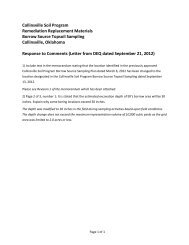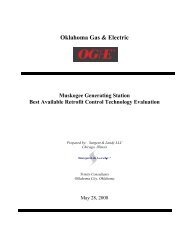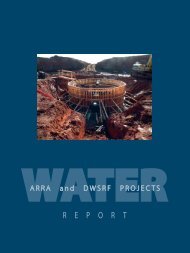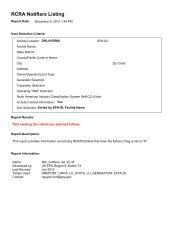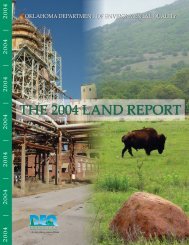Technical documentation and software quality assurance for project ...
Technical documentation and software quality assurance for project ...
Technical documentation and software quality assurance for project ...
You also want an ePaper? Increase the reach of your titles
YUMPU automatically turns print PDFs into web optimized ePapers that Google loves.
Martin Goodrich Baker Engineering <strong>and</strong> Risk Consultants<br />
Greg Jackson University of Maryl<strong>and</strong><br />
Tom Spicer University of Arkansas<br />
Doug Walton National Institute of Science <strong>and</strong> Technology<br />
Kin Wong Department of Transportation<br />
Special Training Requirements/Certification:<br />
There are no special additional requirements or certification required to use the new fire<br />
<strong>and</strong> explosion option scenarios in ALOHA. However, certain terminology peculiar to<br />
these specific scenarios will be different from those involving the toxic gas model runs.<br />
It is recommended that anyone new to fire <strong>and</strong> explosives <strong>for</strong>ecasting review the user<br />
<strong>documentation</strong> <strong>and</strong> become familiar with the example problems. In particular, hazards<br />
now include overpressure <strong>and</strong> thermal radiation risk, as opposed to toxic chemical<br />
concentrations.<br />
Data Sources:<br />
Eagle-ALOHA uses the existing ALOHA/CAMEO chemical data sources with the<br />
exception of in<strong>for</strong>mation on fuel reactivity. For a small set of chemicals, ALOHA uses<br />
values <strong>for</strong> fuel reactivity referenced in Appendix C of John L. Woodward, Estimating the<br />
Flammable Mass of a Vapor Cloud, published by American Institute of Chemical<br />
Engineers, 1998. For all other flammable chemicals, ALOHA assigns medium reactivity.<br />
Program structure:<br />
TECHNICAL DOCUMENTATION<br />
Generally, the <strong>project</strong> only allows the new scenarios <strong>for</strong> that subset of existing ALOHA<br />
chemicals that are classified by the National Fire Protection Association's Fire Protection<br />
Guide to Hazardous Materials as a category 3 or 4 flammable hazard. This includes<br />
flammable gases <strong>and</strong> liquids with a flash point below 100 °F. The model will allow the<br />
user to select combustible liquids (category 1 <strong>and</strong> 2 flammable hazard) but may, <strong>for</strong> lowtemperature<br />
scenarios, provide a warning to the user that the chemical may not burn at<br />
the user-specified temperature.<br />
Figure 1 shows the possible scenarios <strong>for</strong> a chemical release from a tank, pool, or<br />
pipeline with an ignition source present at the beginning of the release. For a delayed<br />
ignition, there may be time <strong>for</strong> a flammable cloud to develop, thereby creating the<br />
potential <strong>for</strong> a flashfire or explosion. For a pool release, there is also the potential <strong>for</strong> a<br />
flashback causing a subsequent pool fire. This is not modeled in this <strong>project</strong>.<br />
4



